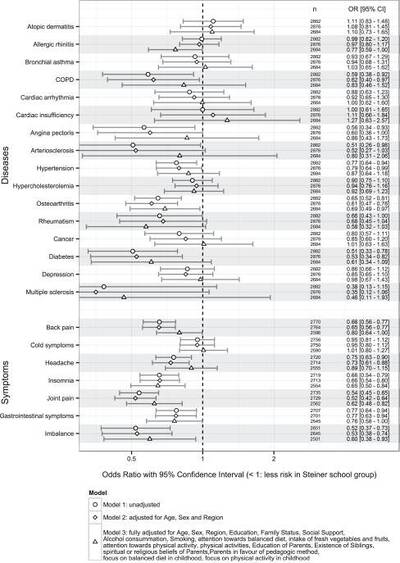Etheric body
In Anthroposophic medicine, the Etheric body or Life body is the body of formative forces responsible for life. In nature there are etheric forces that are not part of a specific organism (though the idea that the earth itself possesses an etheric body has been also extrapolated in more contemporary science such as in Lovelock's Gaia Hypothesis[1]). In living organisms such as plants, animals and humans, these etheric forces are organized into an independent body, though not a body in the physical meaning of the word[2]. The etheric body is responsible for vitality, reproduction, regeneration and also the faculty of memory.
Attributes of the Etheric Body
In lower organisms there are no other embodied spiritual bodies (such as the astral body or I) though these forces relate from the outside- in plants growth rhythms are regulated by planetary influences. One remarkable difference between plants and animal form development is the lack of apoptosis (programmed cell death) in plant forms. In animals and humans apoptosis is essential for development and improper coordination of this results in birth defects[3].
Rudolf Steiner described the etheric body throughout his books and lectures. He described it as visible to clairvoyant sight though its effects are apparent in the physical world. One of the twelve senses described in Anthroposophy is the sense of life. Feelings of fatigue or overflowing energy are characterized as a distinct sensory impression type that allows an experience of one's own etheric body[4]. Steiner used the term "time body" interchangeably with etheric body. In Waldorf pedagogy he emphasized the need to avoid abstract thinking and memorization in the first seven year period of life. The etheric body is tied to physical growth in the first seven years of life and memory and thinking are dependant on transformed forces of the etheric body[5]. Studies have found a decrease in the frequency of several chronic diseases in students who attended Waldorf schools[6][7]. Significant associations were found with atopy, asthma, osteoarthritis though trends in reduced rates of diabetes, hypertension, cancer and multiple sclerosis were present but did not reach statistical significance.
References
- ↑ 1.0 1.1 Kirchner, James W. (May 1989). "The Gaia hypothesis: Can it be tested?". Reviews of Geophysics. 27 (2): 223–235. doi:10.1029/RG027i002p00223.
- ↑ 2.0 2.1 Girke, Matthias; Soldner, Georg (22 October 2018). "The Fourfold Human Constitution; The life organization". Anthromedics.
- ↑ Haanen, C; Vernes, I (January 1996). "Apoptosis: programmed cell death in fetal development". Eur J Obstet Gynecol Reprod Biol. 64 (1): 129–33. doi:10.1016/0301-2115(95)02261-9. PMID 8801138.
- ↑ Blanning, Adam (2015). "The Sense of Life from a Medical Doctor's Perspective" (PDF). Gateways (68): 8–10.
- ↑ Steiner, Rudolf (20 April 1915), The Etheric Being in the Physical Human Being (lecture) (in Deutsch), Berlin
- ↑ Fischer, H. Felix; Binting, Sylvia; Bockelbrink, Angelina; Heusser, Peter; Hueck, Christoph; Keil, Thomas; Roll, Stephanie; Witt, Claudia (12 September 2013). van Elm, Erik (ed.). "The Effect of Attending Steiner Schools during Childhood on Health in Adulthood: A Multicentre Cross-Sectional Study". PLoS ONE. 8 (9): e73135. doi:10.1371/journal.pone.0073135. ISSN 1932-6203.
- ↑ Alfvén, T; Braun-Fahrländer, C; Brunekreef, B; von Mutius, E; Riedler, J; Scheynius, A; van Hage, M; Wickman, M; Benz, M R; Budde, J; Michels, K B (April 2006). "Allergic diseases and atopic sensitization in children related to farming and anthroposophic lifestyle--the PARSIFAL study". Allergy. 61 (4): 414–421. doi:10.1111/j.1398-9995.2005.00939.x. ISSN 0105-4538. PMID 16512802.


